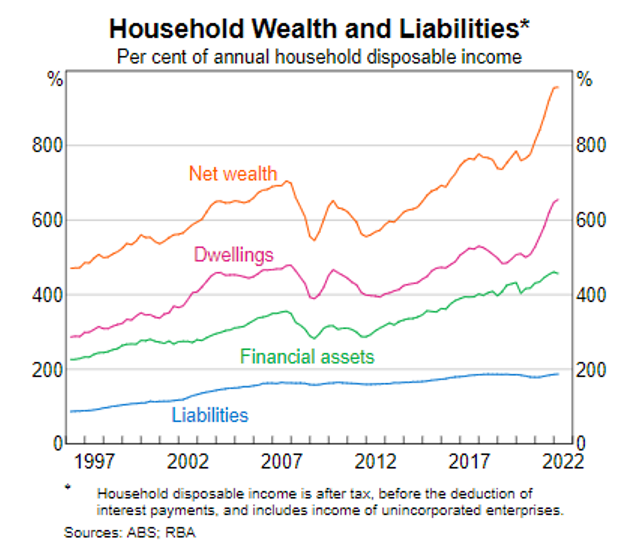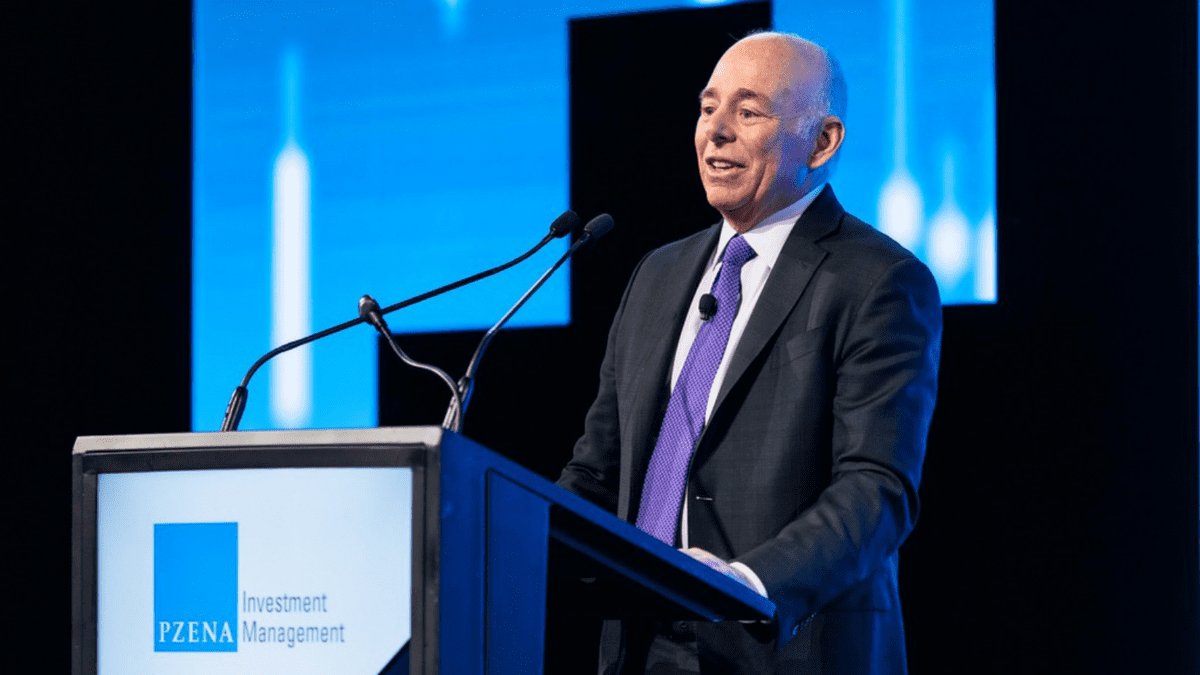Higher rates to erode Aussie wealth levels
With interest rates marching quickly higher, household wealth will likely drop significantly from record levels in the year ahead and financial planners are warning Australians to diversify out of bricks and mortar into listed assets to better diversify their wealth.
The chart below from the Reserve Bank highlights the sharp run up in household wealth during the pandemic, in line with accelerating property gains, compared to a steadier rise for financial assets, such as shares and superannuation.

Total household wealth increased 1.2 per cent or $173 billion in the March quarter of 2022, reaching a record $14.9 trillion, while wealth per capita rose to a record high of $574,807, to be up 16.8 per cent over the year, according to data from the Australian Bureau of Statistics. Since the March quarter of 2020, household wealth has soared 35.3 per cent; not surprisingly, residential property has accounted for most of the growth in household wealth since the start of the pandemic, rising by 40 per cent. Superannuation balances have increased by 22.5 per cent.
68 per cent of household wealth was held in property, which totalled $10.2 trillion in the March quarter, compared to $3.7 trillion in superannuation assets and a record $1.2 trillion held in shares and $1.5 trillion in cash deposits.
According to Jonathan Philpot, wealth management partner at HLB Mann Judd, once a mortgage is under about 50 per cent of a home’s value, Australians should consider other strategies to start building wealth outside of the family home. “The sooner this can be achieved, the greater time you will then have to build investment wealth independent of the family home,” Philpot says.
Scott Keeley, a senior financial planner at Wakefield Partners, says while all assets are impacted by rising interest rates, property is typically hit harder than shares, with investors able to build a portfolio of shares that counter or actually benefit from interest rate rises.
“No two companies are impacted the same way be a rate rise,” Keeley says. “On the other hand, most property is purchased with debt, meaning that an interest rate rise is likely to have a greater impact across the entire sector.”
More property pain to come
Economists say household wealth is likely to fall from record levels over the coming year as higher mortgage rates force property prices lower. “We continue to expect a 15 per cent to 20 per cent top-to-bottom fall in home prices out to the second half of next year followed by a gradual recovery,” says Shane Oliver, chief economist at AMP Capital.
“The main downside risk to our forecasts would be if the cash rate is raised to the 4 per cent level the money market is assuming – this would more than double household interest payments and push total mortgage repayments to record highs relative to incomes and likely drive a 30 per cent or so fall in prices,” Oliver says.
Louis Christopher, managing director of SQM Research, predicts property prices will keep falling through the spring selling season. “There is now a clear trend across all cities of rising listings which is being driven by lower buyer interest and is ultimately symptomatic of the national housing downturn,” Christopher says.
“I think the spring selling season is going to be a very tough one for property sellers and their respective agents,” he adds. “While asking prices have been adjusting downwards since February, there will need to be further compromise if property vendors do want to sell this spring.”
Christopher expects distressed property selling to rise in the coming months given some borrower won’t be able to repay their mortgages. As at 6 September 2022, there were 6,384 residential properties nationwide selling under distressed conditions. This was up from 6,257 distressed listings recorded on 6 September 2022. Just prior to Covid, there were some 15,000 properties selling under distressed conditions.











